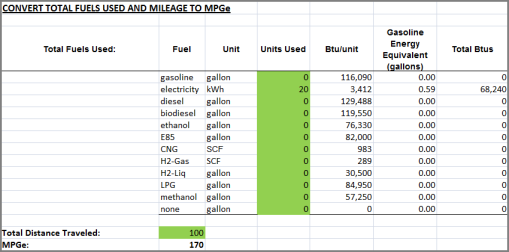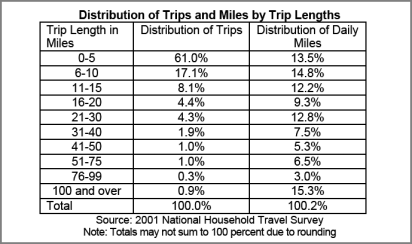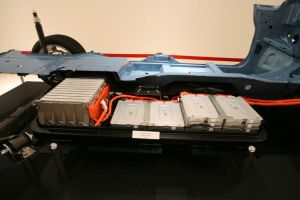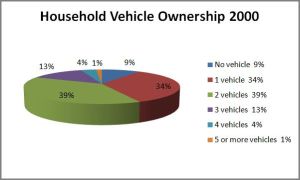Dr Dennis Lyle of GM-Volt.com tried to calculate the MPG Equivalent of Chevy Volt, Nissan Leaf and Tesla Roadster using Progressive Automotive X Prize standard. But he got it wrong.
Automotive X Prize uses the below formula to calculate.
MPGe = (miles driven) / [(total energy of all fuels consumed)/(energy of one gallon of gasoline)])
They have also given an Excel Spreadsheet and a pdf document to help anyone calculate the MPGe of any vehicle.
To calculate the MPGe for an EV we need to know the claimed range for a given charge. In the case of Volt it is 40 miles, Nissan Leaf is 100 miles and Tesla is 244 miles. Let us take these numbers at face value.
We also need to know how much electric power is used to reach that claimed range. That is where things get complicated. Chevy Volt has publicly stated several times that they only use about 50% of their 16kwh battery i.e. 8 kwh. This is what Lyle uses to calculate the EV only MPGe of GM Volt as 170 MPGe (40 miles for 8kwh).
But, unfortunately, Lyle uses full 100% battery capacity of Nissan Leaf and Tesla Roadster to calculate their MPGe. To put is mildly this is comparing apples to oranges. No EV can use 100% of the battery – it will ruin it quickly.
Let us see this from another angle. At 40 miles / 8 kwh, Volt has a 5 mile / kwh efficiency. At 100 miles / 24 kwh, Nissan Leaf would have only 4 mile / kwh efficiency. How can Volt, a much heavier vehicle than Nissan Leaf because of all that gas engine weight, be 25% more efficient than Nissan Leaf in electric only mode ?
Let us say Nissan Leaf uses an aggressive 80% of the battery – instead of the 50% that GM-Volt uses. That makes them use 20kwh for their 100 miles range, giving them the same 5 miles / kwh efficiency.
In general EVs give anywhere between 4 and 5 miles / kwh. GM’s EV1 gave a little more than 5 miles / kwh since it had a very good coefficiency of drag and was a small two seater.
GM stated in in their press conference announcing their 230 mpg nonsense that Volt will give a combined city+highway efficiency of 25 kwh / 100 miles. This is 4 miles / kwh and would reduce their claimed 40 miles electric range to 32 miles.
For now let us stick to the city operation only – since both GM Volt and Nissan Leaf have claimed their per charge range with city cycles only.
Using this information, we get 170 MPGe for both GM Volt and Nissan Leaf in electric operation.

Next, we need to figure out the MPGe for Volt when driven higher than 40 miles. Lyle has done that using the trip distribution table given in the pdf document linked above to be 167 MPGe, assuming 50 miles per gallon for Volt in generator mode, which looks a little high – but we can let it pass. But the combined calculation is wrong, as shown below. Lyle seems to be using Distribution of Trips instead of Distribution of Daily Miles.
This pdf document (AXP COURSE DESIGN – BASELINE DRIVING STATISTICS) gives all kinds of statistics on trip lengths by urban and rural drivers. Automotive X-Prize stipulates 100 miles of driving for EV and PHEV vehicles. Using the below distribution of daily miles, we see that 70% of the daily miles are under 40 miles and 14.8 % are between 40 and 100 miles. Since we are here restricted to 100 miles, our distribution for the sake of calculating MPGe for the GM Volt becomes 83% under 40 miles and 17% over 40 miles. If you incorrectly use Distribution of Trips instead of Distribution of Daily Miles, you get 98% under 40 miles and 2% over 40 miles – which is wrong.

Now, getting back to the calculating overall MPGe of Volt, we have 170 MPGe 83% of the time and 50 MPG 17% of the time. This yields a combined efficiency of 149.6 miles for VOlt – let us say 150 MPGe.
So final figures would be : Chevy Volt : 150 MPGe and Nissan Leaf : 170 MPGe.
But there is actually something overlooked here. X-Prize clearly says, we need to figure out how much power is drawn from the mains while charging the vehicle, not just use what is stored in the battery.
The amount of electricity consumed will be measured from the plug (AC) to return the vehicle to the state of charge it started the stage with.
If we assume a 90% efficiency while charging the battery, the MPGe will reduce by about 10% from 170 MPGe to 150 MPGe for Leaf and Volt would be 133 MPGe.
Nissan Leaf : 150 MPGe
GM Chevy Volt : 133 MPGe
Posted in Electric Cars











